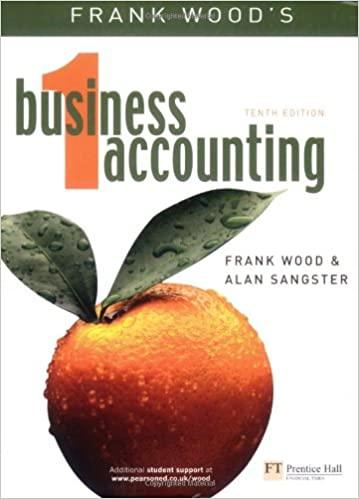Answered step by step
Verified Expert Solution
Question
1 Approved Answer
A dog training business began on December 1 . The following transactions occurred during its first month. December 1 Receives $32,000 cash as an owner





A dog training business began on December 1 . The following transactions occurred during its first month. December 1 Receives $32,000 cash as an owner investment in exchange for common stock. December 2 Pays $7,440 cash for equipment. December 3 Pays $4,320 cash (insurance premium) for a 12-month insurance policy. Coverage began on December 1 . December 4 Pays $1,240 cash for December rent expense. December 7 Provides all-day training services for a large group and immediately collects $1,700 cash. December 8 Pays $260 cash in wages for part-time help. December 9 Provides training services for $2,640 and rents training equipment for $720. The customer is billed $3,360 for these services. December 19 Receives $3,360 cash from the customer billed on Dec. 9 . December 20 Purchases $2,120 of supplies on credit from a supplier. December 23 Receives $1,840 cash in advance of providing a 4 -week training service to a customer. December 29 Pays $1,360 cash as a partial payment toward the accounts payable of Dec. 20. December 30 Distributed a $560 cash dividend to the owner. Information for month-end adjustments follows: December 31 One month of the 12 -month, $4,320 insurance policy is expired by December 31 . This leaves $3,960 not yet expired. December 31 A physical count of supplies on December 31 shows that only $1,260 of supplies remain of the $2,120 supplies purchased. December 31 The $7,440 of equipment purchased at the beginning of December has a useful life of 5 years and will be worth nothing at the end of 5 years ( 60 months). The business uses straight-line depreciation to allocate the $7,440 net cost over 60 months. On December 31,1 month of depreciation must be recorded. December 31 The business agreed on December 23 to provide a 4 -week training service to a customer for a fixed fee of $1,840 paid in advance. By December 31, the business has provided 1 of the 4 weeks of services and earned one-fourth of the fee. No revenue is yet recorded. December 31 On December 31, wages of $660 are owed to a part-time employee for work done over the past 3 weeks. Those wages are not yet paid or recorded. December 31 The business agreed to provide 6 weeks of training services to a customer for a fee of $4,560, or $760 per week. The customer agrees to pay the full $4,560 at the end of 6 weeks when services are complete. By December 31,2 weeks of services have been provided, but the business has not yet billed the customer or recorded the 2 weeks of services provided. Prepare the required journal entries, adjusting entries, and closing entries. Use the drop-downs to select the accounts properly included on the income statement. The unadjusted, adjusted, or post-closing balances will appear for each account, based on your selection. Use the drop-downs to select the accounts properly included on the balance sheet. The unadjusted, adjusted, or post-closing balances will appear for each account, based on your selection. Begin by selecting "Post-closing" from the drop-down below. Then, for each account, use the drop-down to indicate whether the account is included on the post-closing trial balance. Based on your decisions, the post-closing trial balance will be created. Compare your results with the Trial Balance tab
Step by Step Solution
There are 3 Steps involved in it
Step: 1

Get Instant Access to Expert-Tailored Solutions
See step-by-step solutions with expert insights and AI powered tools for academic success
Step: 2

Step: 3

Ace Your Homework with AI
Get the answers you need in no time with our AI-driven, step-by-step assistance
Get Started


